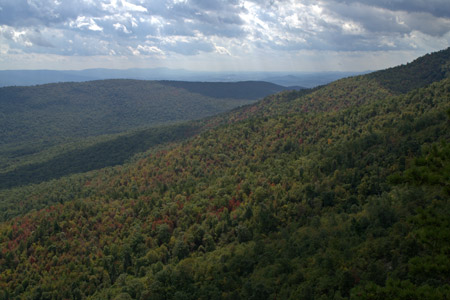On Nov. 18, the U.S. Forest Service released the much-anticipated management plan for the George Washington National Forest. At the heart of that anticipation was whether the Forest Service would uphold a proposed ban of hydraulic fracturing in the forest — it would have been the first national forest to have such a ban. Instead, the Forest Service compromised, allowing hydraulic fracturing — known more familiarly as fracking — where leases already existed prior to the plan.

The Forest Service’s decision to allow fracking is counter to their mission to sustain the health, diversity and productivity of the nation’s forests and grasslands to meet the needs of present and future generations. While American Forests agrees with the multi-use mandate for our national forests, not all activities are good for our nation’s forests. Energy and mineral exploration does not sustain the health, diversity or the productivity of our forests. It threatens them.
George Washington National Forest contains more than 40 species of trees and 2,000 species of shrubs and herbaceous plants. The forest has 2,340 miles of perennial streams and 200 species of birds and 60 species of mammals. Overall, 53 federally-listed threatened or endangered animal and plant species call this forest home. As the largest and most popular national forest in the eastern U.S., it is a prominent recreational spot, with sites such as the Appalachian Trail, Mount Roger National Recreation Area, and Virginia Creeper Trail.
Every 10 to 15 years, national forests must update their management plans, and the George Washington management plan was up for its renewal in 2014. The Forest Land and Resource Management Plan for the George Washington National Forest was last revised in 1993, and the last draft was in 2011. That draft stated plans to ban fracking in the 1.1 million-acre forest — a ban that would have been a first for any national forest. American Forests has consistently advocated in support of this ban because of the potential risks to the watershed, quality of drinking water, and wildlife.
The new federal management plan reverses the 2011 draft’s intent of a total ban on fracking. Instead, it restricts drilling to 10,000 acres already leased for oil and gas drilling, about one percent of the total national forest.
Quite simply, fracking damages delicate forest ecosystems. The process of hydraulic fracturing releases shale gas and oil by injecting water and unknown chemicals into the earth, and has been known to cause significant groundwater contamination as well as dangerous levels of methane emissions, a hazardous greenhouse gas. According to researchers, fracking has also been linked to earthquakes, indicating that this practice has a significant effect on the geology of the planet.
Another concern with fracking in the George Washington National Forest involves the James and Potomac rivers. These rivers feed the Chesapeake Bay, which is the focus of a multibillion-dollar restoration project directed by the Environmental Protection Agency. If these rivers are polluted as a result of fracking, they could interfere with the progress on this restoration project, as well as affect the drinking water for as many as five million people.
On the plus side, the plan nearly doubles riparian protections and strongly recommends that Congress designate a 90,000-acre scenic area on Shenandoah Mountain and 27,000 additional acres of new wilderness. Unfortunately, this is not enough. The continued leasing for oil and gas is counterintuitive to the popular use of the largest eastern national forest — which sees about one million hikers, campers, hunter, anglers and wildlife watchers annually — and contrary to the mission of the Forest Service to ensure healthy and resilient forests.